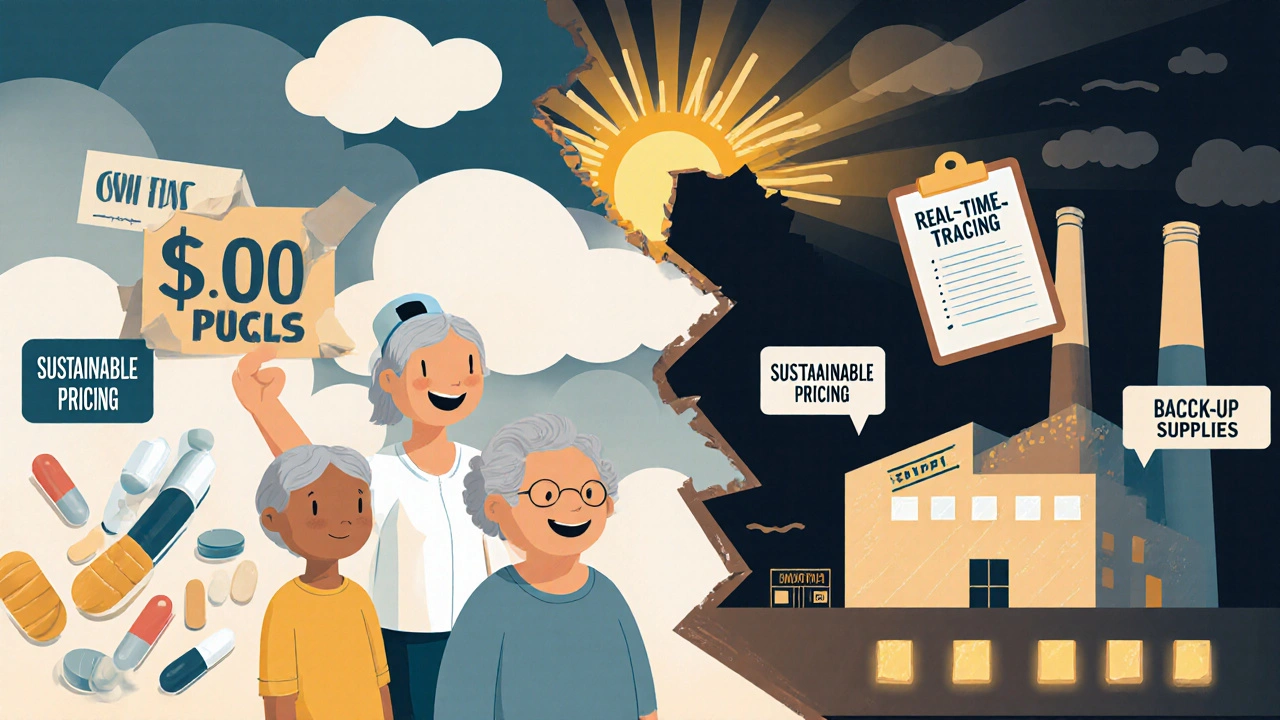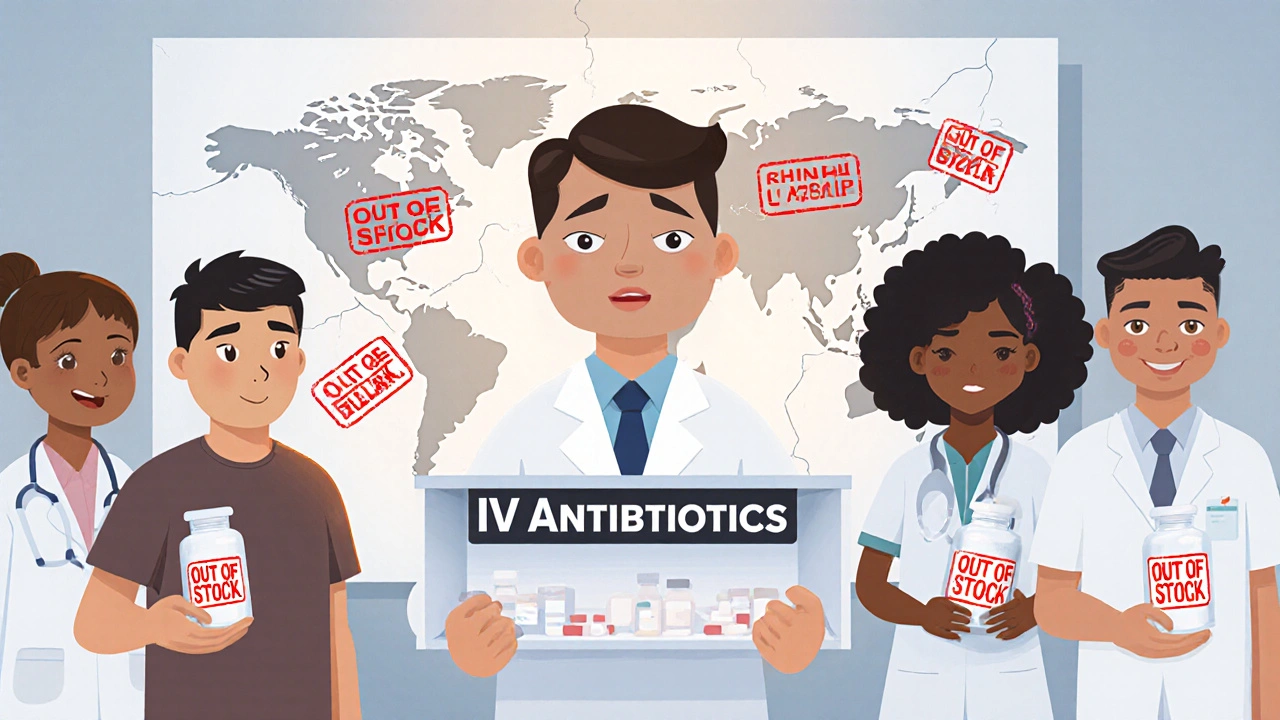By now, most people have heard about drug shortages-but few realize how deeply they’re tied to the supply chain for generic medications. It’s not a temporary hiccup. It’s a broken system. As of April 2025, there were 270 active drug shortages in the U.S., and nearly all of them involve generic drugs. These aren’t luxury medications. They’re the antibiotics, IV fluids, chemotherapy agents, and heart drugs that patients rely on every single day. And when they disappear, the consequences aren’t theoretical-they’re life-threatening.
Why Generic Drugs Are the First to Go Missing
Generic drugs make up 90% of all prescriptions filled in the U.S. But they account for just 13.1% of total drug spending. That’s because they’re cheap. And that’s exactly the problem. Manufacturers make razor-thin profits on these drugs-sometimes less than a dollar per pill or injection. When production costs rise-even slightly-companies have little room to absorb the hit. So they stop making the drug. Or they move production overseas to cut costs. And that’s where the real risk begins. Most of the active pharmaceutical ingredients (APIs) used in U.S. generic drugs come from just two countries: China and India. Together, they supply over 80% of the world’s APIs. China alone produces about 40% of global API capacity. But here’s the catch: the FDA has repeatedly flagged manufacturing quality issues at facilities in these countries. In 2023, a single FDA inspection shut down production of cisplatin, a critical chemotherapy drug, because of contamination in an Indian plant. That led to a nationwide shortage. And it wasn’t an accident. It was predictable.The Sterile Injectables Crisis
Not all generic drugs are created equal. Sterile injectables-things like IV antibiotics, epinephrine, heparin, and chemotherapy drugs-are the most vulnerable. Why? Because they’re incredibly hard to make. They require clean rooms, specialized equipment, and precise temperature controls. One tiny error can ruin an entire batch. And because they’re so complex, only a handful of manufacturers in the world can produce them. For many of these drugs, there are only one or two suppliers left. That’s called market concentration. And it creates a single point of failure. In 2023, a tornado destroyed a Pfizer plant in Kentucky that made 15 different injectable medications. Overnight, hospitals scrambled. Some patients had to delay cancer treatments. Others got substitute drugs that weren’t as effective-or came with more side effects. Pharmacists reported spending 20 to 30% of their workweek just trying to find alternatives. That’s not pharmacy work. That’s crisis management.Brand-Name vs. Generic: A Tale of Two Supply Chains
Compare this to brand-name drug manufacturers. They have global networks. They stockpile inventory. They invest in backup suppliers. Why? Because they make money. A single brand-name drug can earn billions. They can afford to build resilience. Generic manufacturers can’t. Their business model is built on competing on price, not reliability. When tariffs were proposed in 2024-ranging from 50% to 200% on imported pharmaceutical ingredients-many experts warned it would make shortages worse. Higher costs mean even fewer companies can profitably make these drugs. And if the only manufacturers left are in countries with unreliable quality control? The risk goes up, not down.
Who’s Really at Risk?
It’s not just cancer patients or ICU cases. It’s the elderly getting antibiotics for pneumonia. The diabetic needing insulin syringes. The child with an infection requiring IV fluids. It’s internal medicine, pediatrics, emergency rooms, and rural clinics. The American College of Physicians found that shortages hit every specialty. But they hit hardest where resources are already stretched thin. One hospital pharmacist in Ohio told an anonymous survey: “We had to ration epinephrine for six weeks. We were giving half-doses because we didn’t know when the next shipment would come. That’s not medicine. That’s guesswork.”Why Solutions Keep Failing
There’s been talk of “onshoring”-bringing drug manufacturing back to the U.S. But it’s not simple. Rebuilding domestic capacity for sterile injectables would take 5 to 7 years and cost $20 to $30 billion. There aren’t enough trained workers. Regulatory approvals move slowly. And even if we did build new plants, would manufacturers stay? Without guaranteed pricing or minimum purchase agreements, they’ll just leave again when profits dip. Some lawmakers have pushed for mandatory six-month reserves of critical generics. Others want public-private partnerships to fund production of high-risk drugs. But progress is slow. Federal agencies like the FDA and HHS have seen staff cuts and budget reductions. Inspections of foreign facilities have increased, but domestic oversight has weakened. That’s a dangerous imbalance.
What’s Actually Working?
There are glimmers of hope. Some hospitals are forming regional coalitions to share inventory and coordinate orders. A few states have started tracking drug availability in real time. The Association of Accessible Medicines is pushing for transparent labeling that shows where APIs come from-so providers know what they’re getting. But real change needs policy. It needs pricing that reflects the true cost of making safe, reliable drugs-not just the lowest bid. It needs incentives for manufacturers to invest in quality, not just cost-cutting. And it needs a system that treats essential medicines like public infrastructure-not commodities to be auctioned off.What Patients and Providers Can Do Right Now
You can’t fix the supply chain overnight. But you can prepare. If you or someone you care for relies on a generic drug-especially an injectable-ask your doctor or pharmacist:- Is this drug on the FDA shortage list?
- Are there alternatives, and are they equally safe?
- Can we get a small backup supply if available?
- Is there a manufacturer known for better reliability?
The Bigger Picture
The generic drug shortage crisis isn’t about one bad factory or one pandemic. It’s about a system that prioritized cheapness over resilience. We outsourced production to save a few cents per pill-and now we’re paying with lives. The data is clear: low price = high risk. And when the only drugs left are the ones nobody wants to make, everyone loses. The next time you hear about a drug shortage, don’t think of it as a glitch. Think of it as a warning. The system is designed this way. And unless we change the rules, it will keep failing.Why are generic drugs more likely to be in short supply than brand-name drugs?
Generic drugs have extremely low profit margins-often less than a dollar per dose-because they’re priced to compete on cost. Manufacturers can’t afford to maintain backup suppliers, invest in quality upgrades, or stockpile inventory. Brand-name drug companies, by contrast, earn billions per drug and can absorb higher costs, making their supply chains far more resilient.
Which types of generic drugs are most affected by shortages?
Sterile injectables are the most vulnerable. These include IV antibiotics, chemotherapy drugs, epinephrine, heparin, and IV fluids. They require complex, expensive manufacturing processes with strict sterile conditions. Only a few manufacturers can produce them, and any quality issue or facility shutdown can cause nationwide shortages. Oral pills are less affected because they’re easier and cheaper to make.
Does sourcing drugs from China and India cause shortages?
Not directly. The problem isn’t the countries-it’s the concentration. Over 80% of active pharmaceutical ingredients (APIs) come from just China and India, and for many drugs, manufacturing is limited to one or two plants. When one facility has a quality issue, shuts down, or faces a natural disaster, there’s no backup. Geographic concentration creates single points of failure.
Can bringing drug manufacturing back to the U.S. solve the problem?
It could help, but it’s not a quick fix. Building new U.S. facilities for sterile injectables would take 5-7 years and cost $20-30 billion. There’s also a shortage of trained workers and regulatory bottlenecks. Without guaranteed pricing or long-term contracts, manufacturers may still leave once profits shrink. Onshoring alone won’t fix the economic model driving shortages.
What role do pharmaceutical tariffs play in drug shortages?
Tariffs on imported APIs would raise manufacturing costs, which would make already low-margin generic drugs even less profitable. This could force more manufacturers to exit the market, reducing competition and increasing shortage risk. Experts warn that tariffs could worsen shortages, especially for essential drugs like antibiotics and IV fluids, rather than fix them.
How do drug shortages affect patient care?
Shortages lead to delayed treatments, substituted medications with unknown side effects, canceled surgeries, and rationed doses. Cancer patients have missed chemotherapy cycles. Diabetics have gone without insulin syringes. ICU patients have received less effective antibiotics. Pharmacists spend up to 30% of their time managing shortages instead of providing care. These aren’t inconveniences-they’re clinical emergencies.
Is there a way to predict which drugs will run out next?
Yes. Drugs with low prices, few manufacturers, and complex manufacturing (like sterile injectables) are most at risk. The FDA and ASHP publish shortage lists, and hospitals use real-time tracking tools. If a drug is priced under $5 per unit and has only one or two suppliers, it’s likely to be next on the list. Monitoring these factors helps providers prepare.


David Cusack
Let me be perfectly clear: this isn't a supply chain issue-it's a market failure dressed up as capitalism. We outsourced the very foundation of public health to nations with zero regulatory accountability, and now we're shocked when the system collapses? Shocking. Truly. The FDA's inspections are a farce-more PR than protection. And don't get me started on the ‘onshoring’ fantasy. We don't have the workforce, the infrastructure, or the will. We just have a nation that thinks ‘cheap’ is a moral imperative.
Willie Doherty
Statistical analysis of FDA shortage data from 2020–2025 reveals a 317% increase in sterile injectable disruptions correlated with a 42% decline in domestic API production capacity. The elasticity of supply is non-linear; marginal cost increases above $0.08 per unit trigger manufacturer exit thresholds. This is not anecdotal-it is systemic. The economic model is mathematically unsound.
Darragh McNulty
THIS. IS. A. CRISIS. 🚨 But here's the good news-we CAN fix this! 🙌 Hospitals are already forming coalitions, pharmacists are fighting daily, and patients are speaking up. Let's amplify their voices! Support local pharmacies, demand transparency, and push for policy changes. We're not powerless. We just need to act-TOGETHER! 💪❤️
Elaina Cronin
It is profoundly disturbing that the United States, a nation with the technological and financial capacity to ensure the uninterrupted availability of life-saving pharmaceuticals, has instead institutionalized neglect under the banner of fiscal austerity. The deliberate underfunding of domestic manufacturing infrastructure, coupled with the abdication of regulatory oversight, constitutes a form of structural violence against the most vulnerable. This is not an accident. It is policy.
Franck Emma
My dad died because they ran out of epinephrine. That’s it. That’s the tweet.
Florian Moser
Thank you for laying this out so clearly. It’s easy to overlook how fragile our healthcare system is until you’re the one waiting for a life-saving drug that just… isn’t there. The fact that pharmacists are spending 30% of their time playing detective instead of helping patients is unacceptable. We need to treat medicine like a public good-not a commodity. Let’s push for real solutions.
Nikhil Purohit
bro this is wild honestly i never thought about how something so small like a pill can break a whole system 😳 we got cheap drugs because we thought it was smart but now we're paying with lives? that's messed up. we need to fix this before someone else dies waiting for an iv bag
Michael Marrale
Did you know the FDA gets its funding from the drug companies it's supposed to regulate? That's right. Big Pharma pays for the inspections. And now you're surprised China and India are cutting corners? This is all orchestrated. The shortages? Planned. The price hikes? Engineered. They want you dependent on their overpriced brand names. Wake up. The system is rigged.
David vaughan
I’ve been a pharmacist for 22 years… and I’ve never seen anything like this. We’re rationing insulin syringes for diabetics. We’re substituting antibiotics that cause seizures. We’re calling other states just to find a vial of heparin. And the worst part? No one in Congress even asks us how we’re doing. We’re not just running out of drugs-we’re running out of hope.
Logan Romine
So… we outsourced the pills… to save a buck… and now we’re paying with lives? 🤔 I mean… wow. What a brilliant economic strategy. We didn’t just trade cheapness for safety-we traded humanity for a spreadsheet. The real tragedy? We knew this was coming. We just didn’t care enough to stop it. We’re not victims. We’re accomplices.
Chris Vere
the system was built to fail if you think about it. profit before people. always. no one expected the collapse because everyone was making money until the moment they stopped. now we cry. but the machines keep running. same as always.
Pravin Manani
From a pharmacoeconomic standpoint, the current model exhibits negative externalities that are not internalized by market participants. The low-margin, high-volume paradigm for generics creates a classic tragedy of the commons: individual rationality (cost minimization) leads to collective irrationality (systemic collapse). Structural intervention-via price floors, strategic reserves, and public manufacturing incentives-is not merely advisable; it is biologically imperative.
Eliza Oakes
Oh please. You think this is about drugs? It’s about control. The government doesn’t want you healthy-they want you dependent. That’s why they let the generics vanish. So you’ll go back to the $1,000 brand-name pills. And don’t tell me about ‘quality control’-we’ve had clean rooms in the U.S. for decades. This is theater. The real shortage? Of honesty.
Clifford Temple
China and India are stealing our medicine. We let them take our factories, our jobs, our children’s lives-and now we’re surprised? We need to shut down every foreign API plant. Ban imports. Build our own. Make America Great Again-by making America’s pills again. This isn’t politics. This is survival.
Shawn Sakura
Man… I just read this and cried. 😭 My mom’s on chemo and we almost lost her last month because the IV bag was gone. I didn’t even know this was happening to everyone. I’m gonna call my rep tomorrow. We need to fix this. Please. Someone help.